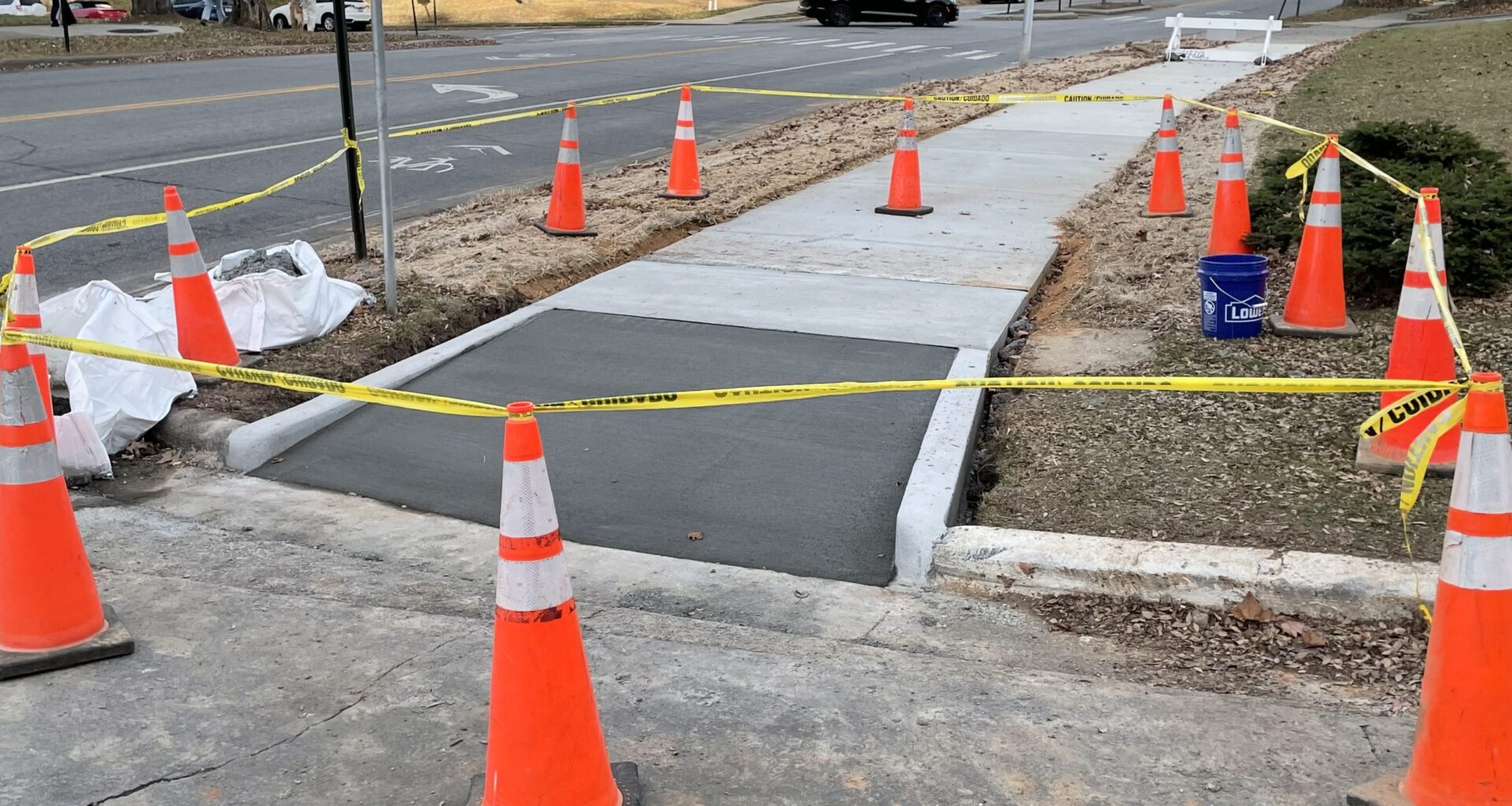Today’s round of questions, my smart-aleck replies and the real answers:

Question: Our tax dollars at work? For the past several weeks, the city has been removing trees and the sidewalk in front of the Renaissance Hotel. They laid new concrete, which took about a week. Now, they are crushing and removing a large section of the new concrete! Plus, will they be replacing the trees when they’re done? Can you please look into the intelligence of this?
My answer: Sure. Didn’t find any.
Real answer: Hey, everybody makes mistakes, right? Well, this is one of those times.
“The sidewalk work being carried out along Woodfin is part of a project to replace sections that had become non-compliant with Americans with Disabilities Act standards due to tree roots disrupting the concrete,” City of Asheville spokesperson Kim Miller said via email. “We are currently repouring the specific section you mention to make sure the curb is installed properly. Admittedly, we didn’t get it perfect the first time.”
Miller says the city understands the reader’s frustration and that of other taxpayers, “but we’re working hard to make sure everything meets ADA standards so our community is accessible to all.”
This was not a costly mistake.
“The estimated cost of the work to bring the curb in line with ADA standards would come in just over $2,000, including materials, equipment and labor,” Miller said.
On the tree front — always an important topic with Asheville residents — Miller had good news.
“The trees will be replaced, but in a nod to being good stewards of taxpayers’ dollars, the replacement trees will be a different species,” Miller said. “This change allows the trees to grow and flourish without disrupting the concrete sidewalk — avoiding future costs associated with a need to replace the sidewalk again.”
![]()
Question: I remember that they can measure COVID-19 levels in wastewater. Do they measure other stuff, too? Flu, strep, and so on? I ask because never in my life have I fallen ill more often or more severely than I have in the fall of 2025 in Asheville, and I’m wondering if it’s just me.
My answer: I haven’t even answered this question yet, and I’m pooped.
Real answer: This is indeed a fascinating subject, because our local sewage plant in Woodfin, run by the Metropolitan Sewerage District of Buncombe County, does test for evidence of illnesses.
“We are testing for COVID, influenza and RSV (Respiratory Syncytial Virus),” Tom Hartye, general manager of MSD, said via email.
The North Carolina Department of Health and Human Services updates an online dashboard that tracks the three illnesses, and it looks like all three have been declining in recent weeks.
 The Metropolitan Sewerage District of Buncombe County’s facility in Woodfin tests for evidence of COVID, influenza and RSV (Respiratory Syncytial Virus) in wastewater. // Photo credit: MSD
The Metropolitan Sewerage District of Buncombe County’s facility in Woodfin tests for evidence of COVID, influenza and RSV (Respiratory Syncytial Virus) in wastewater. // Photo credit: MSD
The latest data run through Nov. 5. The levels are reported as “gene copies per person.”
For COVID-19, it shows that Buncombe County peaked this year at 47 million gene copies per person on Sept. 3. As of Nov. 5, that measurement had dropped to 3 million gene copies per person.
For influenza, the peak came Jan. 29, at 41 million gene copies per person. The levels dropped precipitously through spring and summer and remained there as of Nov. 5, at 1 million copies.
RSV numbers have been low all year, although they did peak at 4 million copies on Jan. 11. By late October they stood at 1 million copies, and at zero by Nov. 5.
The DHHS explains how these measurements work on the website, noting it tests wastewater samples from water treatment plants across the state. Besides Buncombe, other western North Carolina facilities that are in the program include Hendersonville, Marion, Spruce Pine, Cherokee and Jackson County.
“People with these respiratory viruses shed viral particles in their stool,” the website states. “These viral particles are pieces of each virus, which causes disease when still intact. In wastewater, the particles are no longer infectious but can still be measured.”
Testing for the particles allows the state to track disease trends.
“Data from these sites serve as a supplemental metric to understand the impacts of respiratory diseases at the community level,” the website states, noting the project is a collaboration between the North Carolina Department of Health and Human Services, University of North Carolina system researchers, wastewater utilities, and public health departments.
The state added measles testing at 28 sites in June 2025.
As far as respiratory illnesses, the state says, “Core pathogens have been following expected seasonal trends over the last quarter.” COVID-19 levels are “moderate and decreasing after a peak in September, and the flu (type A) and RSV levels “have remained low since their peaks last winter.”
“There have been a few Flu B detections over the summer, after peaking in the spring,” the site states. “There have been no measles detections since we started monitoring in late June.”
So, my friend, I think you’re just experiencing some bad luck, although I’m sure we’ll all get a chance to join you in the coming flu and respiratory illness season.
Meanwhile, wash your hands frequently, folks! And use hand sanitizer!
Asheville Watchdog welcomes thoughtful reader comments on this story, which has been republished on our Facebook page. Please submit your comments there.
Asheville Watchdog is a nonprofit news team producing stories that matter to Asheville and Buncombe County. Got a question? Send it to John Boyle at jboyle@avlwatchdog.org or 828-337-0941. His Answer Man columns appear each Tuesday and Friday. The Watchdog’s reporting is made possible by donations from the community. To show your support for this vital public service go to avlwatchdog.org/support-our-publication/.
Related

